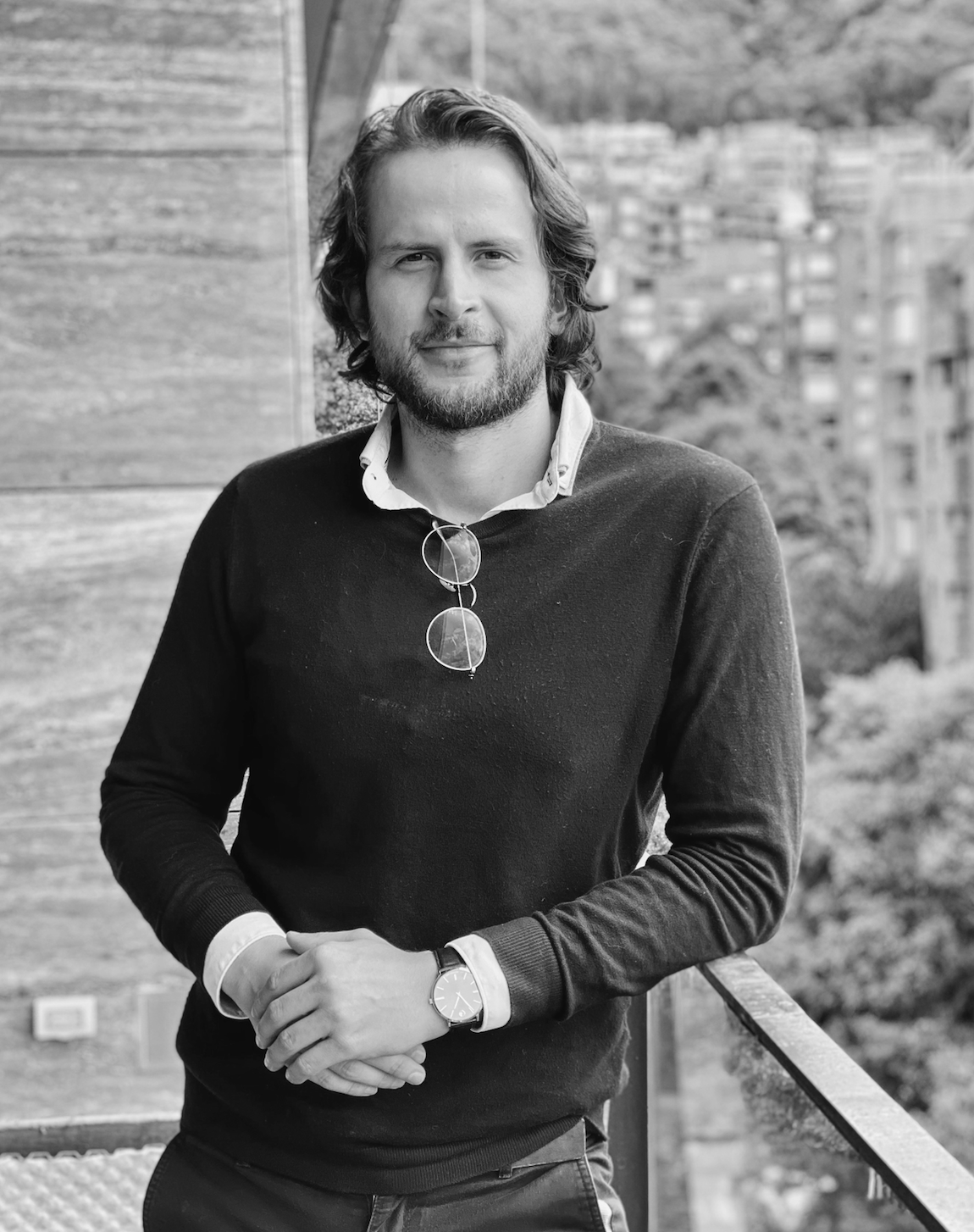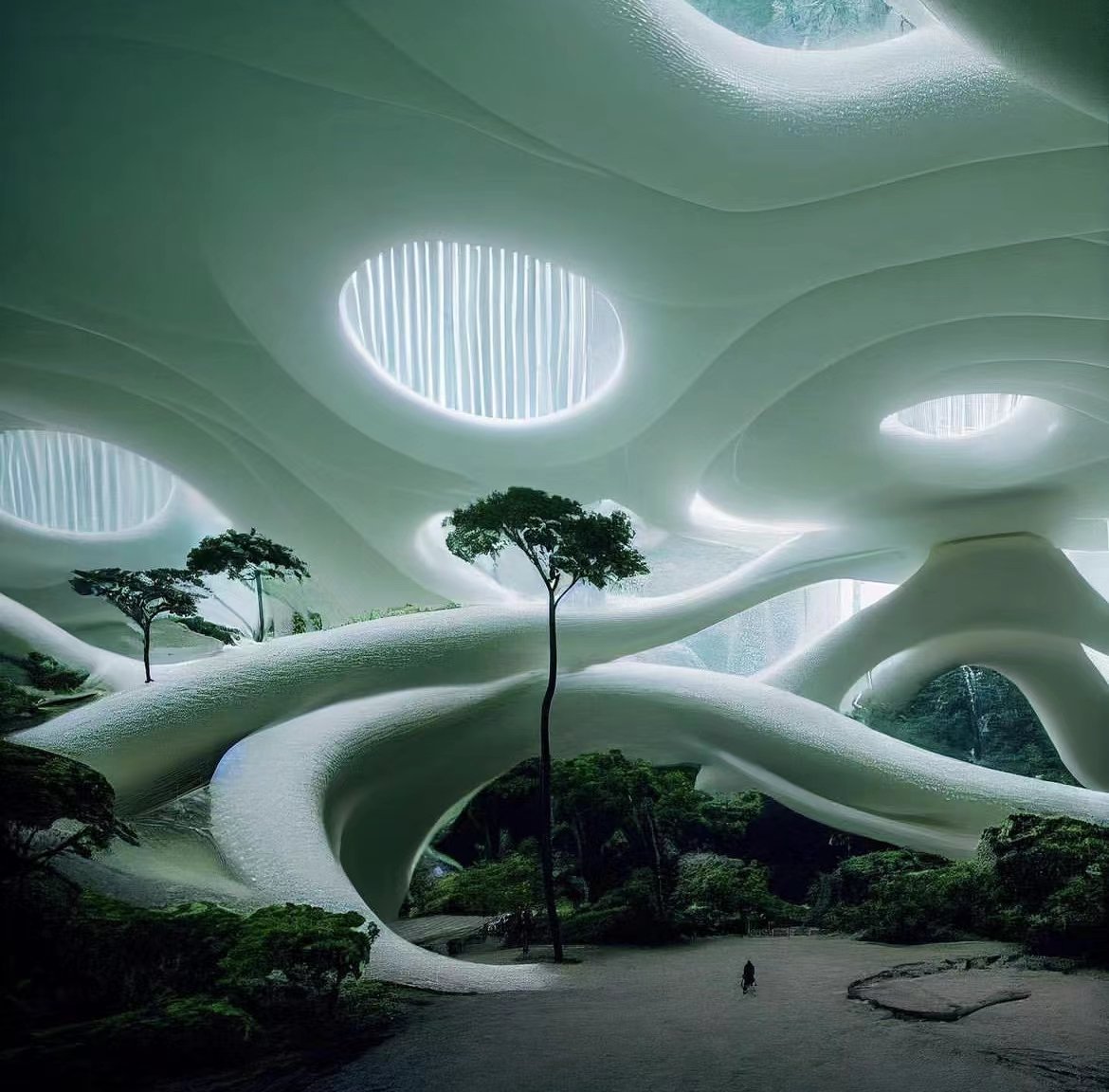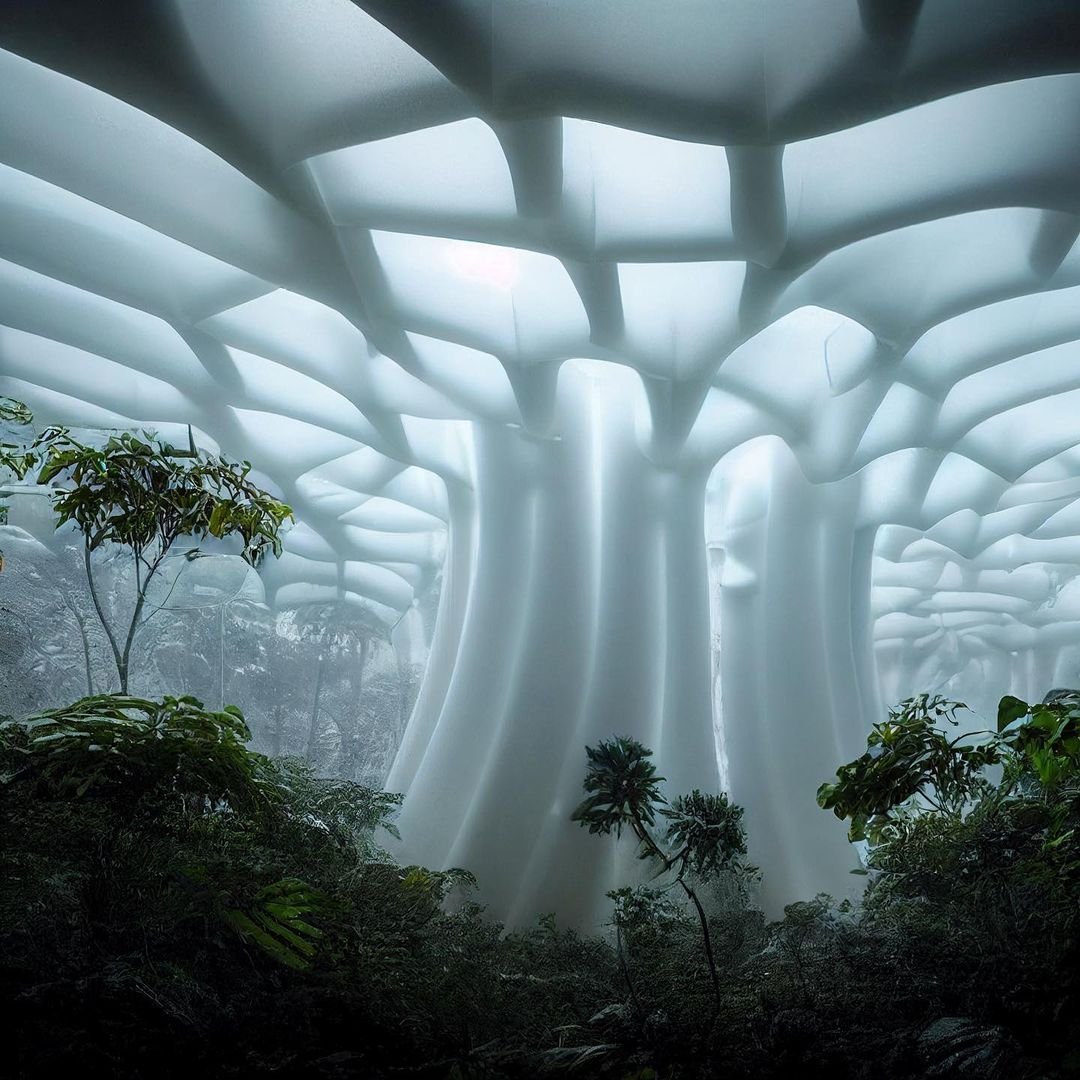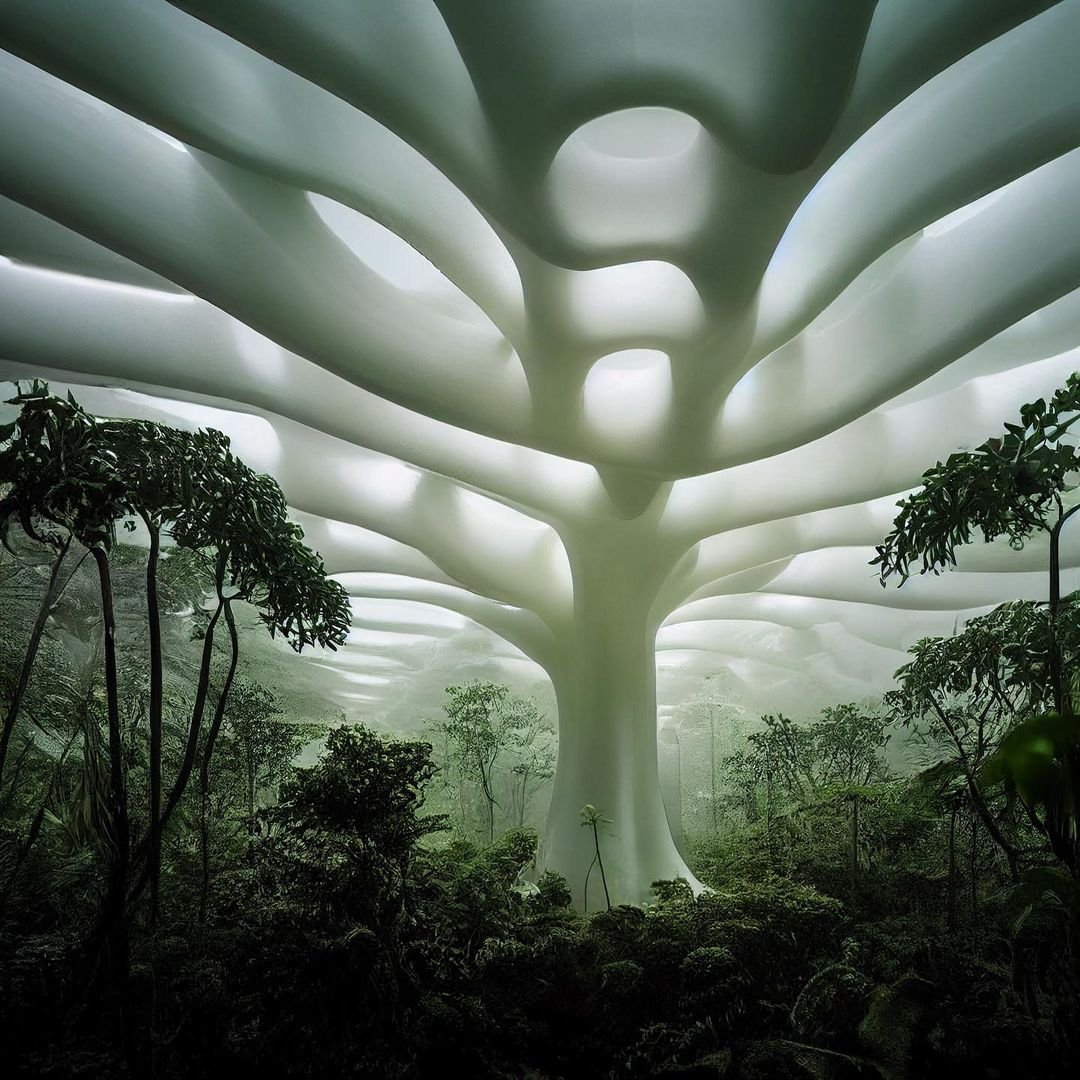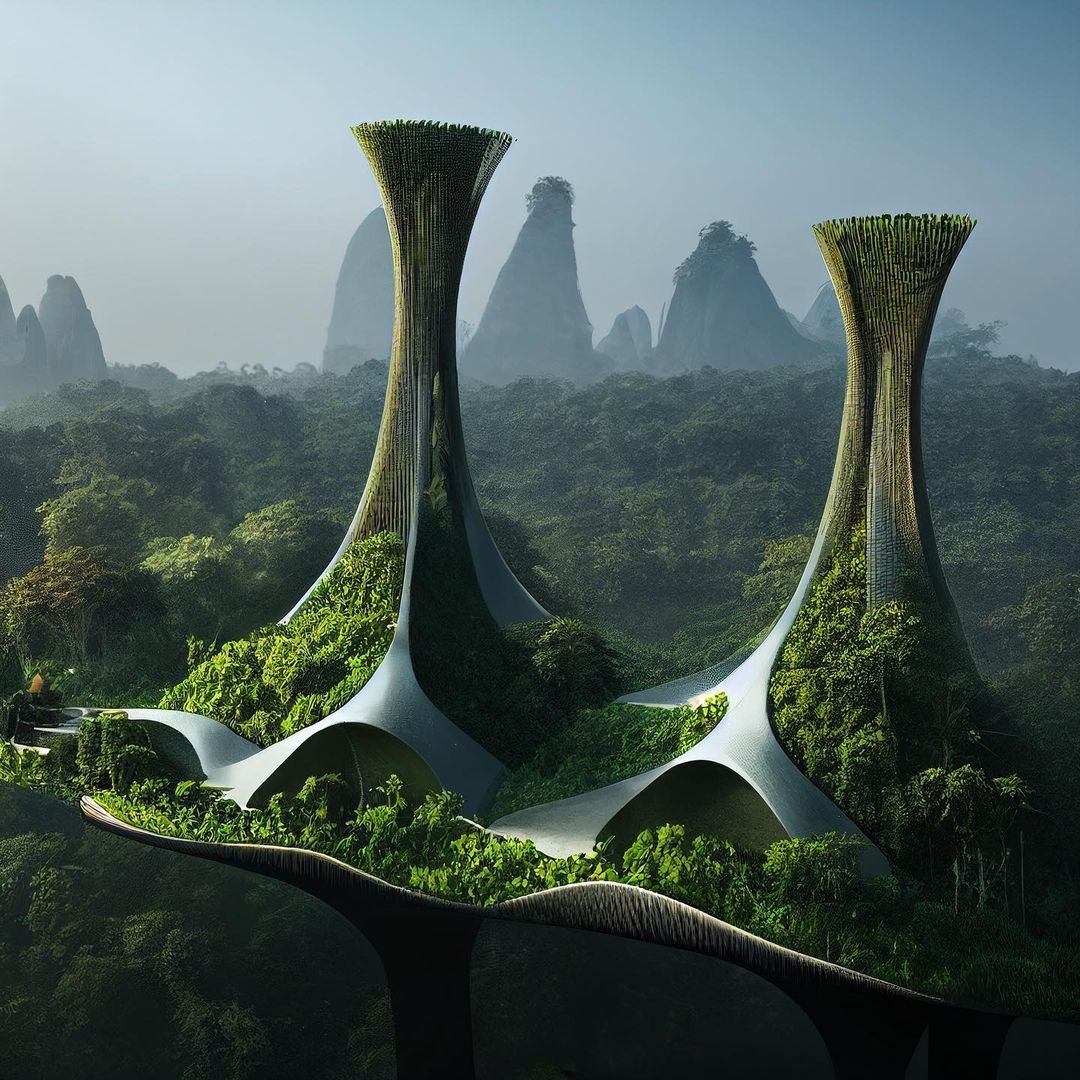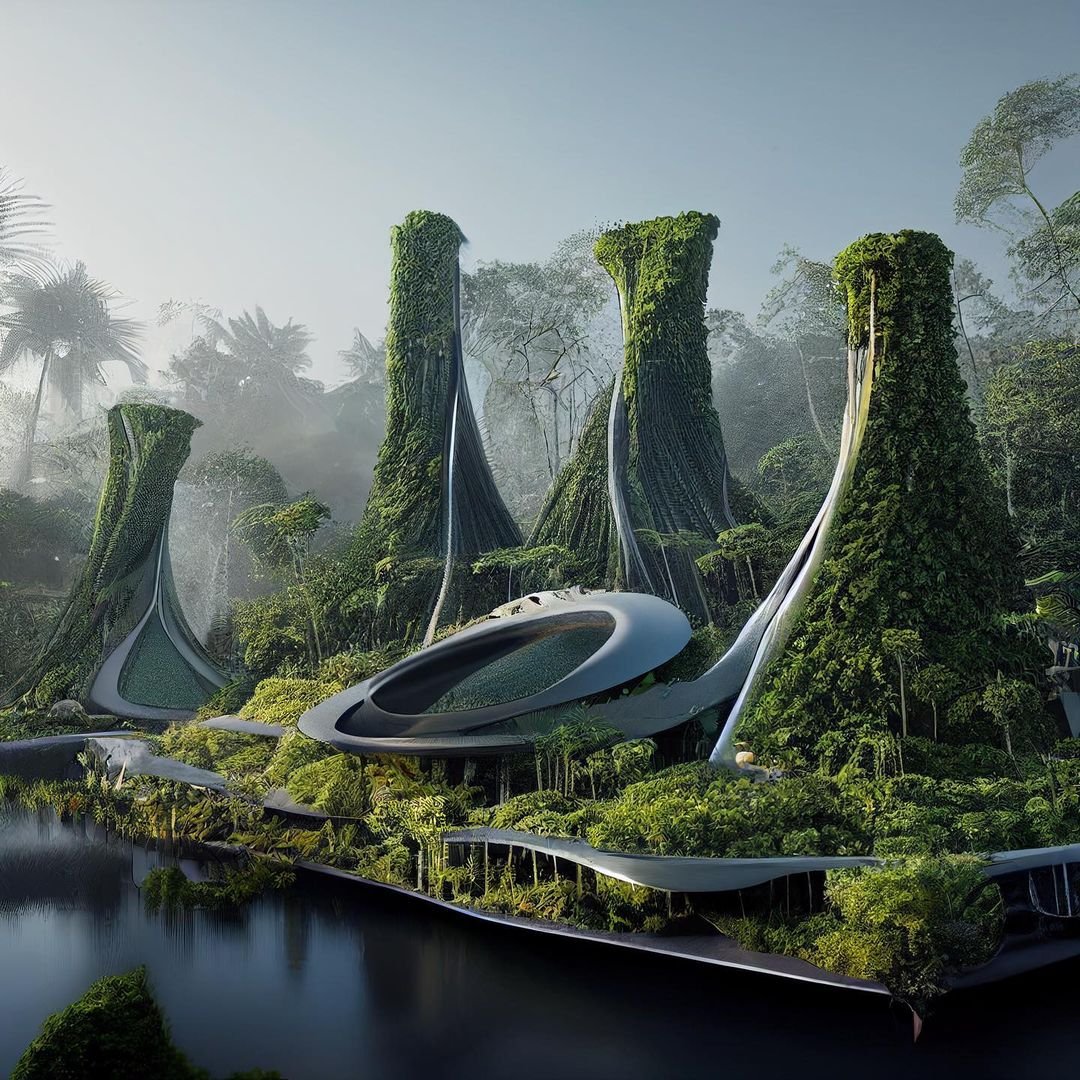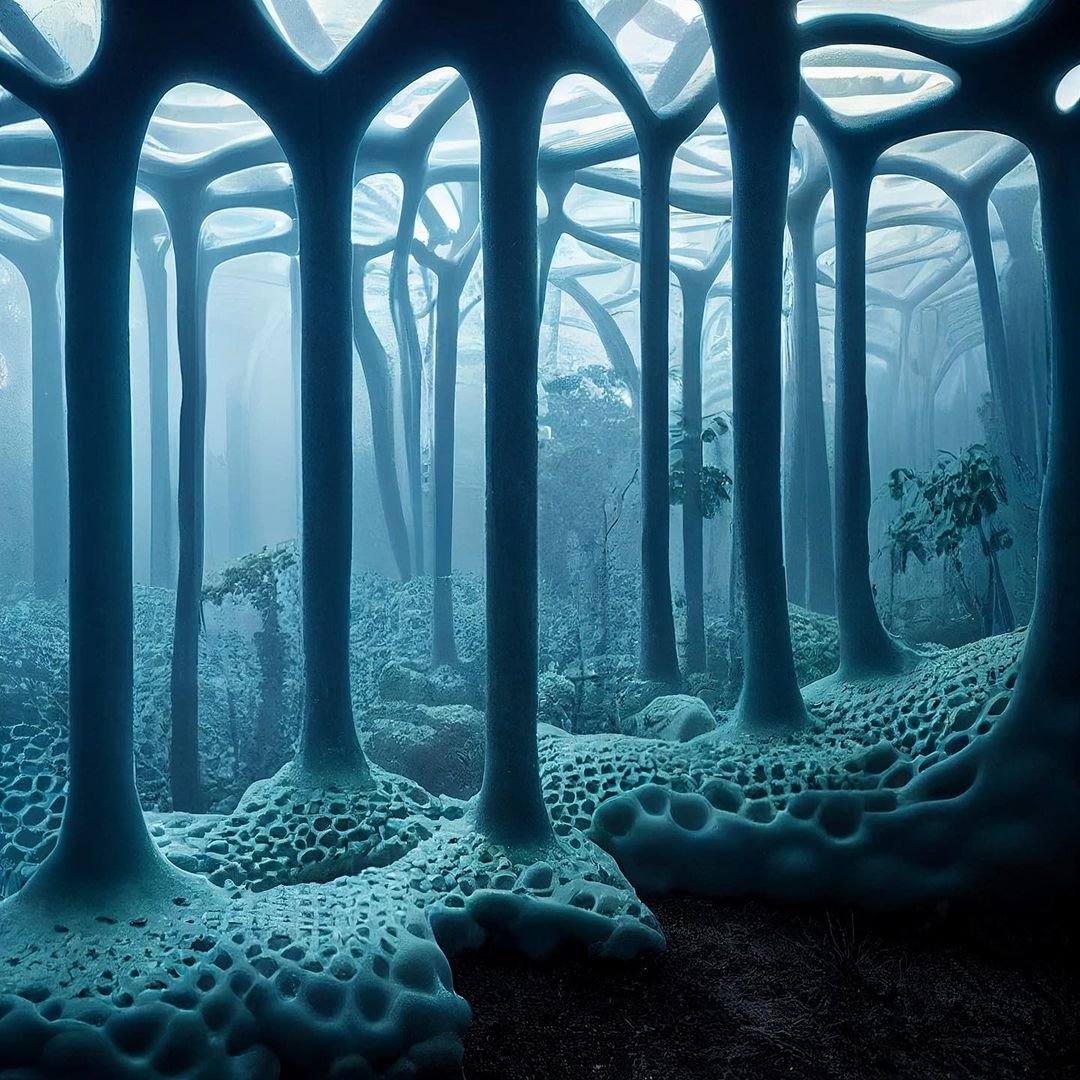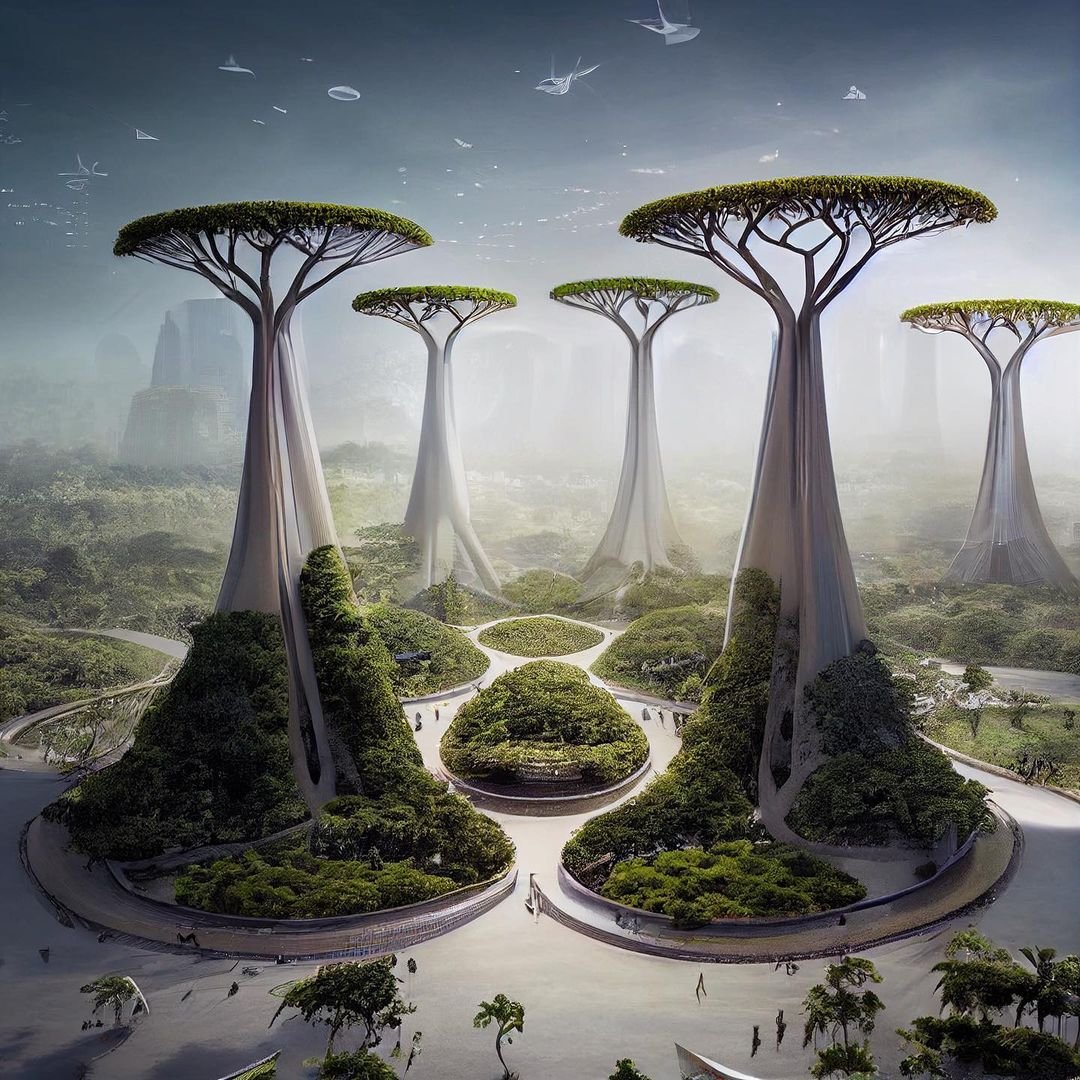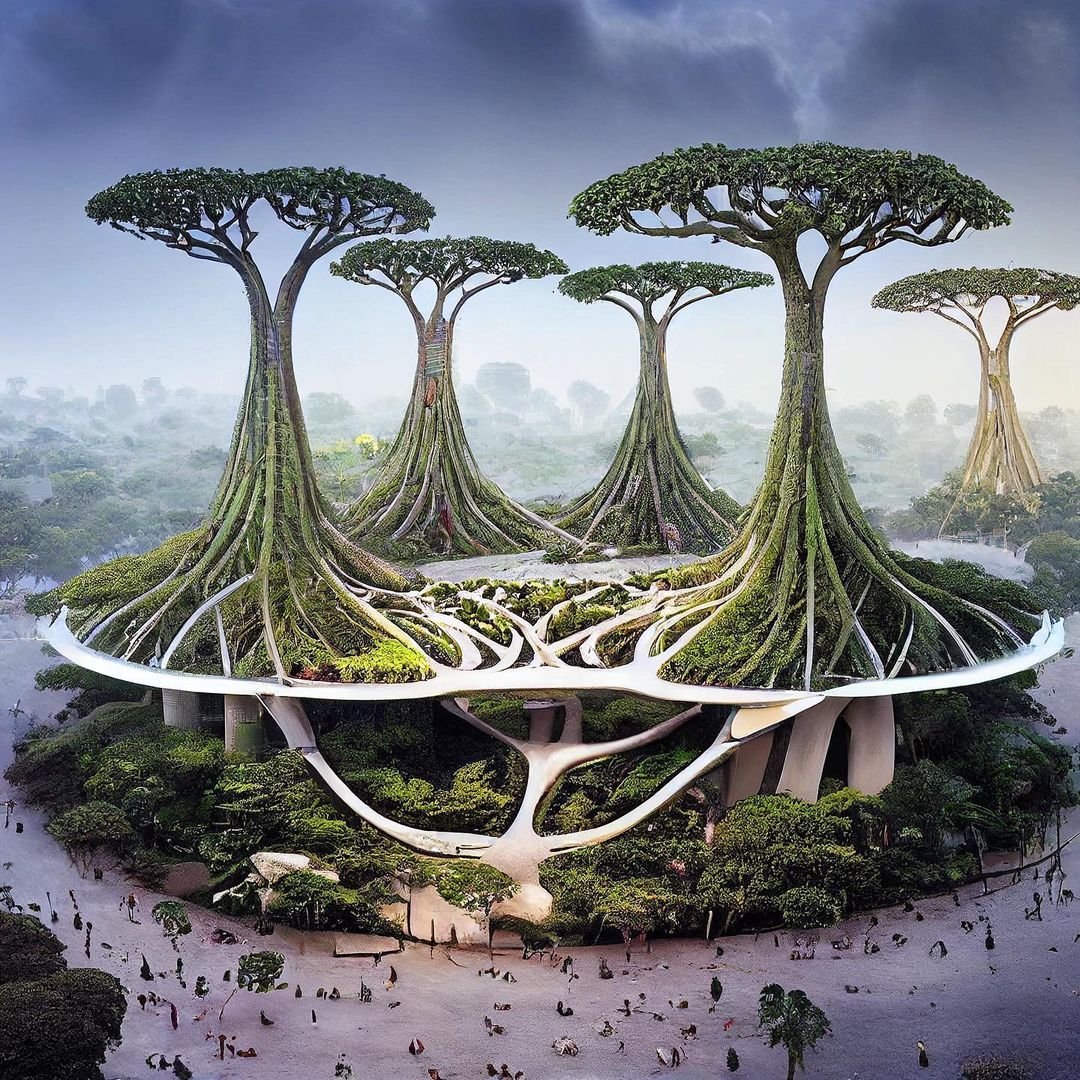Diego Castro|MONOMOArchitects, CGI, AI artist, architecture and our ecosystem are merging
theFOUND Virtual Art Center Talk with artificial intelligence artist Diego Castro, the founder of MONOMO Artificial Intelligence Design Studio. The advent of the era of artificial intelligence has triggered great changes in human society. Artificial intelligence has not only become the main force leading the scientific and technological progress in the new era, but also widely penetrated into various fields of social life. AI helps art and design, which is the result of the high development of computer science, high automation and the deep integration of art and technology. In recent years, more and more artists, designers and interdisciplinary teams use AI to promote the innovation and development of art design.
AI injects new vitality into art and design, making it focus on big data analysis and application, and forming a data based and algorithm driven generation design method. The development of perceptual technologies such as emotional computing and tactile interaction has expanded the depth perception capability of intelligent machines, enabling art design to perceive human behavior, and even understand human needs and goals, so that people can use the experience accumulated in the real world to interact with the virtual world, and achieve a more natural and harmonious interaction between human and intelligent design.
Artificial intelligence promotes the development of art and design, which is first reflected in the change of thinking mode and method. The thinking modes of AI to assist art and design mainly include system thinking, big data thinking, service design thinking, etc. Systems thinking is a systematic way of thinking, including user perception, behavior, emotional experience consensus behavior and cognitive logic behavior. Today's design needs the help of the system information platform, system data sources and interdisciplinary achieve a systematic design. Big data thinking subverts the traditional art design model and process. Through data mining, analysis, screening and application, it can effectively improve efficiency and help scientific decision-making. Service design thinking is user centered, starting from users' needs and emotional experience, to ensure that the design is useful, efficient and unique.
Secondly, the rapid development of artificial intelligence, relying on its outstanding advantages in the field of image recognition and generation, is increasingly involved in the field of art design. At present, the application of AI in art and design mainly has two ways: one is image stylization, that is, art imitation and recreation. Diego Castro, a CGI and AI AI artist from London, England, said, "Artists always want to express the world through their senses, in the field of visual art, through their eyes, with their personal views, forms and styles. There, architecture and our ecosystem are merging, and our natural environment is either used as a stage or materialized into a comprehensive protagonist."
theFOUND&MONOMO
Q1:
As an artist based in London and Bogotá, as well as representing a visualization company, you have led your team to create digital architecture for a variety of purposes for clients in different countries and in different parts of the world. We were also able to see that you have created a number of independent works in addition to those for commercial use. How would you define MONOMO's creative style from the point of view of an artist, rather than a company?
I would say MONOMO has always strived for emotional responses in his work and digital creations, as there is a lot of emotional input into the creation of most of the CGI (Computer Generated Imagery) and AI (Artificial Intelligence) pieces, it can be best described as a conversation between creator, medium and observer, specially in the case of AI. The medium is very important in this case, because it is technology driven, as many other mediums have stayed mostly still, technology focused mediums like AI or CGI are in a constant evolution. Software plays a big part on how we are able to express our ideas. These software simulations use a number of ingredients appealing to certain emotions that are very sensitive to light, atmosphere and form. As much as a great sunrise or sunset can give us a sense of wonder and warmth, any David Fincher movie can give us a sense of mystery and depth. Artists are always looking to represent the world in their personal view, form and style, through their senses, and in the visual arts realm, through their eyes. Both CGI and AI pieces have a strong relationship with raw form and the natural environment, where a merge between architecture and our ecosystems is taking place, our natural environment is used either as the stage or materialized as a synthesized main character. There is an edge and forward thinking attribute, that would make you presume that most, if not all of the pieces are a representation of the future world through MONOMO´s eyes. Some of them are trying to depict how a future building should look like, with immediacy and familiarity, and sometimes they venture to try to show via abstract visions, what the world should like or feel like, in a more distant future.
Q2:
We can see from your past work that you have worked for a variety of organizations including residential developers, commercial developers, government offices, schools and so on. However, you have also mentioned that you have a particular interest in ‘residential constructions', both in terms of rendering the exterior of buildings and interior design, is there a particular reason for this?
Residential CGI pieces have always appealed to the architect within MONOMO, as it is such a main part of our lives, where we create our most cherished memories. Is it our most commonly used stage, in which our lives develop, so being able to be a part of it, in the present and future is strongly related to the emotions we feel through our journey as creators and as observers. It is also where our most personal views of the world arise, our favorite colors and textures, our relationship to other art pieces, our relationship to the already built environment. There is also a sense of responsibility for the state of our natural environment, as we develop these strong emotions during our early days, you also form a strong bond to elements that are present in our residential developments, our plants on our backyards, the trees we can see through our windows or the small parks in which we play that are next to our house. As presenters of possible futures, we have a strong influence to show developers and future decision makers of residential developments that these emotions and associations can work with them and not against them.
Q3:
You have your own design concept when it comes to architectural design.However, when you are dealing with commercially minded developers, you need to convince them with art. How do you strike a balance between business and art in this process of communication and collaboration?
Business is organized by human individuals, which have also the inclination to make decisions based on emotional responses. That is where light and atmosphere can play a key role to make all of these observers dream and fantasize about the future environment they will build and enhabit. When they are presented with these visions and speculative ideas of how an unbuilt project might look, they are seeking for that sense of wonder and admiration, but also realism. If a visual CGI piece can evoke these emotions, it gives that bit of encouragement for all the parties involved in the process of making these buildings happen. The balance to present these pieces without losing the touch of familiarity, is much parallel to achieving that synthesized output between nature and architecture, with the pieces developed with AI. There should be an equilibrium between the presented project and its atmosphere and intention, for it to be unrecognizable where the first one starts and the last one ends, that is where you achieve true representation of a vision for the future.
Q4:
We can tell from your extensive body of work that you focus on creating realistic architectural renderings that can be used by the public community.However, there are also some surreal pieces, such as the 'Nature structure' series. When creating these works, are you doing so for purely artistic reasons or with sustainability in mind?
The Nature Structure series is one of the most recent of my work at MONOMO, it is the next step on my evolution as a digital creator, these are developed with AI CLIP (Contrastive Language Image Processing) Diffusion models, and they´re made to provoke and inspire the minds of individuals and future decision makers on how a possible vision of our future might look like, where nature and architecture merge or synthesize in a way that makes them unrecognizable from each other. Climate and change are possibly two words that most of our current society knows very well, as it is affecting us daily in every corner of the planet. We are losing a big part of our biodiversity on our ecosystems while raising the temperature for our own living conditions, increasing the amount of fresh water needed to sustain our civilization, acidifying our oceans, and creating islands of residues, as we are currently crossing irreversible tipping points as stated by David Attenborough and Johan Rockström in “Breaking Boundaries: The science of our planet”. I am a huge advocate for the natural environment and I am fascinated by its biodiversity, so this is MONOMOs contribution to the vision of a world where we are one with nature rather than competing or just extracting value from it. It is a vision where nature takes a front seat in the way our main cities and societies are built and inhabited. This will only come to pass if we believe it can happen, and if we imagine it first. As William Arthur Ward said ”only if you can imagine it, you can achieve it. If you can dream it, you can become it”. These pieces presented make us question, is nature itself art? and if so, we can answer the question, can art be sustainable?.
Q5:
In creating the series "Nature Structure" and "Nature Meditation Water Structure" you have used the pioneering AI mapping software "Midjourney", and the results are stunning. What have you learnt from using AI software as an aid in your creative process?
Being a self taught artist in the digital era comes with an additional layer of challenges, you not only had to learn all the 3d CGI traditional software but also be vigilant to the next stages of emerging technologies, we live in possibly the fastest changing environment and set of conditions any human has experienced before, and with this comes the evolution of AI, in this case machine learning models that can produce incredible amounts of work in extraordinary time frames. These two series are produced with Midjourney, which allows you to create sets of images based on text prompts and what I call “AI Discriminator Intuition”, a sort of subtle language exchange with AI to obtain the results you are looking for through the tools the Beta Midjourney platform in discord is allowing you to use which are variation, upscaling, and re-mastering, this last one is essentially enhancing to a more photorealistic look. This allows a less frictional process between ideation and creation, as the distance has become shorter for the materialization of our own thoughts into reality. Normally it would take you several orders of magnitude of effort to develop a CGI concept and validate your own idea. With tools like MidJourney you can focus more on the quality of content you are producing rather than the techniques you have been perfecting to present your ideas. I believe it will definitely work as an advantage for those who want to express their thoughts through visual art, and that want to focus not only on the quality of their content, but also the quality of their own narratives. It also adds a smidgen of boldness into your creation process as the use of these new technologies inspires you to think about the future in more innovative and creative ways than before, because the mechanism that you are using to output these pieces comes with the influence not only from base images you can use to influence it but also millions of images from databases that add to your own vision.
Q6:
Today, more and more technological devices are being fused with art. In addition to AI software, you have also put VR devices into use to immerse designs from 360-degree stereoscopic images. What kind of effect can VR devices help you to achieve than the usual flat display?
Virtual Reality Outputs in the form of 360-degree stereoscopic images joined in walkthrough platforms, are part of a set of basic tools we can get our hands on, towards the materialization of virtual worlds or “metaverses”. Our own sensorial experience includes a broad set of senses that can help expand our own visions in a more immersive experience that resembles reality on a whole different level than the visual approximations we are currently delivering. By Using more advanced VR focused software like Unity or Unreal Engine we are on our way to crossing a boundary where virtual worlds will be at one point, indistinguishable from reality. The effects are unquantifiable for now, but you can definitely give the observer a taste of what your vision could become and feel if it came to life either on a digital world or reality itself, as when you are working on these you can include more senses into your work for a more compelling and realistic outcome outside of the visual realm.
Q7:
As an outstanding international architectural team, you have been commissioned by the government to win many awards in architectural competitions, which has given your team much more public exposure. With such an important responsibility on your shoulders, how do you position yourselves in the public eye? How would you define your brand image?
On government CGI commissions, we work in the hands of architects, designers, builders, and developers who are in charge of the design and vision for the project. We are only in charge of the visual output of the project and how it will be presented to the public before it becomes a reality. So we do have a responsibility on how it will look, but the overall structure is already there, so we work as enhancers of these ideas. We position ourselves as facilitators of these projects to happen, as they normally play part in large biddings, where the visual representation is a way to put them at the center of attention for decision makers. MONOMOs brand as a starting point with our artistic approach, is defined by its association to many like minded businesses and individuals. I believe we have been lucky to attract many sensible collaborators that have enriched our work and our vision. For a time now I´ve been working to develop my own voice and narrative to share my own vision of the world and contribute to what the future could be like if we allowed ourselves to imagine a different route than the ones we are seeing becoming a reality in many parts of modern society. I strive for my brand to be associated with a forward looking thought process influenced by the fascinating natural environment that surrounds us, and the underlying systems that are in place for this world and its biodiversity to flourish amongst human civilization.
Q8:
With the rapid development of digital technology today, more and more traditional architectural artists are joining the field of digital art, and the competitiveness will become stronger and stronger. How do you plan to deal with the new challenges brought by the wave of the times? Do you have any new plans or visions for the future?
This is an area I feel very comfortable with, as my interests not only as MONOMOs founder, but as an individual, have been fueled by curiosity to engage with socio-economic analysis, to being fascinated by technological developments, and to watch closely the development of future hardware and software, so that works hand in hand with the pieces that I am normally producing as the more research I do, more tools become available for me to create more innovative work. Growing up I mostly always carried a pencil or a pen wherever I went, when CGI and 3d software appeared on my map, I slowly drifted towards these new tools as I am a huge advocate of efficiency in my work, the most amount of ideas I can produce in the shortest time for me is a success. I´m not normally striving for perfection, but rather for validating my own creative ideas, that is where AI is just going to continuously excel, as it will evolve to a point where almost any thought you might have you will be able to materialize and validate it. I believe when you are working this close with technology, the first wave of quality content comes from very good users of the software, individuals that can use the software to their own advantage by perfecting their techniques, but when the bridges start to close and those techniques no longer give you an edge, that is where a pure creative mind has the advantage, because it becomes all about the creativity within the pieces, and I believe through my digital creations as MONOMO will only be richer and more edgy because of that infinite pursue of creative explorations that is always in the back of my mind.
